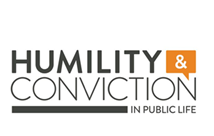Normalization—Practices Make It So
23 September 2019
Rising nationalism and nativism around the world generate a toxic brew of arrogance and xenophobia that pits people against one another in often frightening ways. Understanding some discursive mechanisms that undermine our capacities to respond to these forces might help.
It has become commonplace for people to worry about the normalization of disrespect and violence, whether in word or deed.
What exactly is “normalization”? In data analysis, normalization is about reorganizing one’s data to eliminate redundancy and expose logical connections by putting similar data together. In everyday speech, people often mean simply that the behavior is becoming common, and so people are no longer surprised by it. Often, they just let it slide, forget about it, and move on. The ignoring might signal approval, or complicity, or disregard. Ignoring is uninformative.
The danger in the normalization of discrimination and violence is not simply about increasing frequency. A society can have a significantly increased incidence of discrimination and hate crimes without these becoming normal. Numbers matter, but if our end goal is to decrease harm, we must look beyond the numbers and see the norms and practices that are being endorsed, created, or destroyed.
Normalization requires the twin actions of licensing and uptake. For a new behavior to become a norm, these licenses taken up in use must shift social and discursive practices. Shifting the practices involves not only repetition, but a sense that the changes are rational and justified.
In speaking, we undertake a commitment to what is said and the inferences that can be drawn from it. As Bob Brandom has explained, a speaker’s commitment licenses audiences to use what the speaker said in a variety of ways, whether repeating, drawing inferences, following up with actions, and more. When Donald says, “Those X-people should be sent back to where they came from,” he has effectively licensed his hearers to repeat his claim, to draw inferences from it, and to rely on those inferences in what they say next. This particular kind of speech act is also action-engendering: it licenses more than speech. It licenses support for deportation, for example. Our speech issues such licenses to re-assert, infer from, and use in new contexts. Each of these subsequent moves can be challenged by other people in the speech situation, but if there is no challenge, all the licenses just hang there like low-hanging fruit, ripe for the picking.
Without hearer uptake, a license could just hang in place indefinitely, or it might die on the vine. For new or previously condemned speech, behavior, or attitudes to become normalized—made normal—it must be taken up into the behaviors and attitudes of others. It must spread. “Taking it up” does not require deep understanding; someone hears it, and incorporates into their repertoire of speech and action. They may not fully grasp the power of their words; they may simply enjoy a sense of camaraderie with those who say such things. The speech becomes ready to hand, available for use in a variety of contexts. It becomes an available practice, spread from person to person.
Simply ignoring the damaging speech of the demagogue, liar, braggart, or other destructive voice, does not un-license further uses of the speech by that speaker or by others. Ignoring has the virtue of not amplifying, and it allows speakers to move on to other speech. And yet, as Jeremy Wanderer has shown, we need to distinguish between ignoring and rejecting. To reject the speech, un-license the attempted license, we need to issue what Brandom has explained as challenges. Challenges are the flip side of commitments.
Challenges are demands for justification, or retraction. When US president Trump tweeted that four Congresswomen should “go back and help fix the totally broken and crime infested places from which they came,” there was significant outcry. Many people pointed out that they come to Congress from districts in the USA. Three of the four were born here, and one is a naturalized citizen. They are all from here. These challenges were multi-faceted; they called him out on (1) the facts: they are Americans, (2) the insult: he called their districts “crime infested” and worse; (3) the racism of his choice of targets, because all are women of color.
The normalization of fear—especially fear of the other—harms our capacity for thoughtful exploration of choices. The normalization of abuse is a tool for inculcating fear. The normalization of arrogance promotes resistance to open conversation and shared inquiry. If I think I know it all, then I will not need to listen to you. Importantly, if I think I know it all, I also will be ready to act without hesitation. So, normalizing arrogance is a way to break down inhibitions that usually (and helpfully) prohibit extreme reactive actions.
Normalization is also, importantly, about impunity. When behaviors that were formerly condemned or even outlawed become commonplace and go without punishment, whether formal or informal, then the process of shifting norms has begun.
When Donald Trump bragged, “I could stand in the middle of 5th Avenue and shoot somebody and I wouldn’t lose voters,” it was appropriate to take it as comment about the loyalty or lunacy of his voters. But even more, this was a claim of impunity. He has not been wrong so far, much to the dismay of those who believe in the inherent dignity of all people. Trump’s crass misogyny did not lose him an election, the way one morally compromising photo of 1988 US presidential candidate Gary Hart ran him out of politics altogether.
Trump’s bombastic lying, which has increased daily, is teaching children that lying pays, thus damaging moral norms. As Jacob Levy has pointed out, Trump’s lies may be less about getting people to believe what he says, and more about getting other people to just repeat him, showing his power over them and amplifying his power across the society. This abuse of power damages epistemic norms.
Practices are key. Identifying and understanding normalization requires paying attention to social practices. If Trump (or any other demagogue) were a simple one-off weirdo, his crass and immoral behavior, his destructiveness would be awful, but would not have the broad social power it does. The strength that comes from numbers in this case lies in the numbers of people bending to his norms, trying to emulate him, and not standing up for the values by which they have lived their lives until now. They give him uptake. Even most of his fans have not lived the way he does or the way he advocates. Most are not phony braggarts, for instance. But being a phony braggart has become more normalized, in that it has become more of a practice in some circles.
Concern about the normalization of explicitly nativist and xenophobic discrimination and violence is a worry about a shift in values. Both moral and epistemic values are at risk when fear and arrogance become common partners. In nations with rising nationalist elements, we much ask whether we are nations that welcome non-citizens to live amongst us and become citizens. Or do we fear the stranger, disdain the immigrant, condemn the asylum seeker? We need to reaffirm the importance of diversity in driving social dynamism as part of what makes us tick.
One might ask: couldn’t we just let bad licenses die on the vine? People concerned with not amplifying harmful behavior advise ignoring it, changing the subject, or simply insisting on facts or inculcating different attitudes and values. These strategies arise from hope that the toxic license will wither and die from lack of uptake. This rarely works. As long as the license hangs there, it can gain active uptake, and be viable. We need direct challenges against harmful licenses for false beliefs, derogating attitudes, or corrupt values. We need to call it out. Proliferating other licenses does not take bad licenses away, and often they are already getting some uptake. That uptake speech issues new licenses, fostering normalization. The positive strategy is important, for while fighting the normalization of harmful behaviors, we still need positive efforts to build better social relations, epistemic practices, and moral norms.
Picture by Lynne Tirrell
- October 2025
- September 2025
- August 2025
- July 2025
- June 2025
- May 2025
- April 2025
- March 2025
- February 2025
- January 2025
- December 2024
- November 2024
- October 2024
- September 2024
- August 2024
- July 2024
- June 2024
- May 2024
- April 2024
- March 2024
- February 2024
- January 2024
- December 2023
- November 2023
- October 2023
- September 2023
- August 2023
- July 2023
- June 2023
- May 2023
- April 2023
- March 2023
- February 2023
- January 2023
- December 2022
- November 2022
- October 2022
- September 2022
- August 2022
- July 2022
- June 2022
- May 2022
- April 2022
- March 2022
- February 2022
- January 2022
- December 2021
- November 2021
- October 2021
- September 2021
- August 2021
- July 2021
- June 2021
- May 2021
- April 2021
- March 2021
- February 2021
- January 2021
- December 2020
- November 2020
- October 2020
- September 2020
- August 2020
- July 2020
- June 2020
- May 2020
- April 2020
- March 2020
- February 2020
- January 2020
- December 2019
- November 2019
- October 2019
- September 2019
- August 2019
- July 2019
- June 2019
- May 2019
- April 2019
- March 2019
- February 2019
- January 2019
- December 2018
- November 2018
- October 2018
- September 2018
- August 2018
- July 2018
- June 2018
- May 2018
- April 2018
- March 2018
- February 2018
- January 2018
- December 2017
- November 2017
- October 2017
- September 2017
- August 2017
- July 2017
- June 2017
- May 2017

